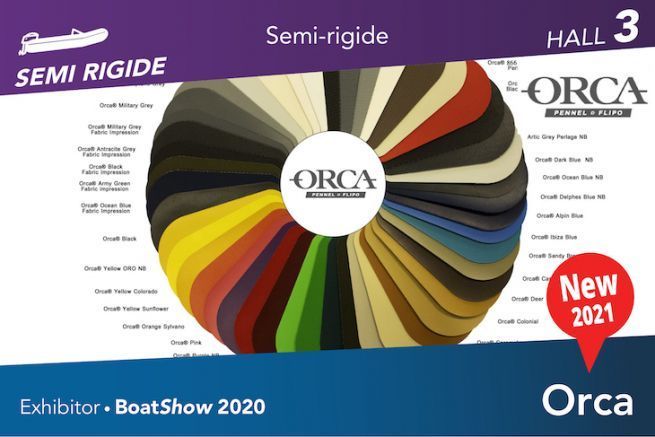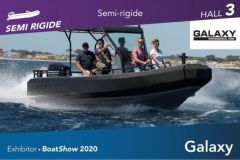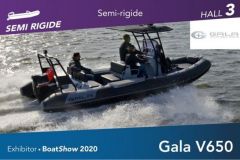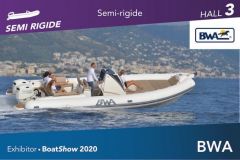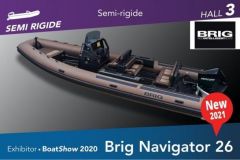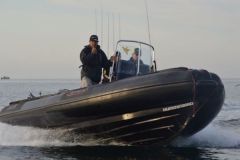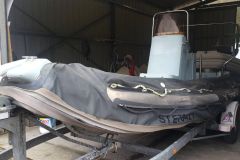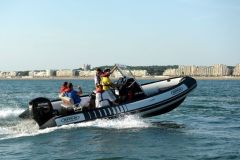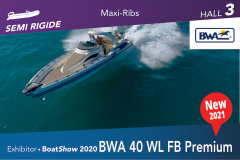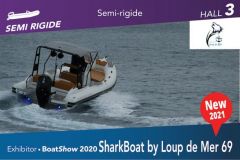ORCA is the Marine department of the company Pennel & Flipo - named after its founders. Present all over the world, the brand specialises in the manufacture of Hypalon/neoprene fabric, a material found on our semi-rigid boats.
How is a hypalon? fabric made?
A textile base is used to give the mechanical properties (tear and breakage resistance) to the final material, on which a solution (glue) is deposited to ensure a chemical bond between the rubber and the fabric. This rubber mixture developed in the lab is then laminated and covered with 2 layers of CR (neoprene) and a layer of hypalon (CSM) to create an elastomer.
The CSM will guarantee excellent resistance to UV, abrasion and hydrolysis. In addition, CSM is very resistant to colouring, even for light colours without yellowing. Based on its experience, ORCA has a significant lead over its competitors in terms of fabric ageing. ORCA fabric degrades much less quickly thanks to a long process of formulation, processing and choice of raw materials.
Between development time and formulation, a total of 12 months of natural/accelerated aging is required to test the tissue in the laboratory. This development ensures the end customer an irreproachable quality, without any delamination (delamination) problems.
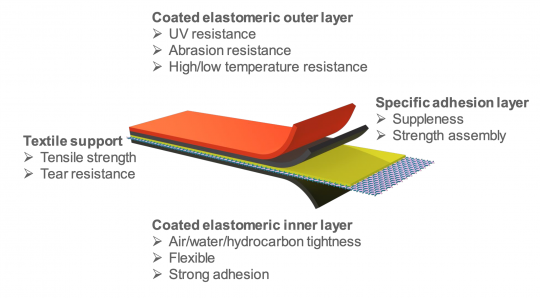
What's the difference between hypalon and PVC??
PVC is basically a rigid material from which, for example, our windows are made. In order to make it flexible and to be able to use it for boat fabrics, a lot of plasticisers have to be added. The combined action of UV light, sunlight and heat will cause the plasticisers to be extracted and PVC will tend to return to its original, and therefore rigid, shape. As it hardens, the PVC fabric will crack.
The hypalon is already a flexible product, it is therefore not subject to these problems of cracking and offers a much better ageing, and an irreproachable colour fastness.
Unlike the PVC market, where there are many players and therefore aggressive selling prices, the hypalon market is a confidential sector. Its implementation requires significant know-how and numerous stages (mixing, calendering, vulcanisation, etc.). The cost of the raw material and the long production process make hypalon/neoprene fabric more expensive. But its better resistance over time largely justifies the difference.

A brand that is close to its customers and constantly renews itself
In order to maintain the quality and performance of its products, ORCA is constantly evolving and looking for more innovative solutions. ORCA's great strength is its ability to develop new colours and textures. The catalogue offers a choice of 30 colours with 6 different finishes.
ORCA accompanies its customers all over the world, ensuring fast deliveries and advising customers on the use and care of fabrics.
Even though hypalon floats are robust and do not require regular renovation, they still need to be maintained.
ORCA therefore recommends that boats should be thoroughly cleaned before launching and cleaned with fresh water after each trip. Before wintering, a complete 3-step treatment is recommended. Even though ORCA's formulations ensure a much longer resistance to mould than any other fabric, it is important to maintain your boat regularly to extend its life.
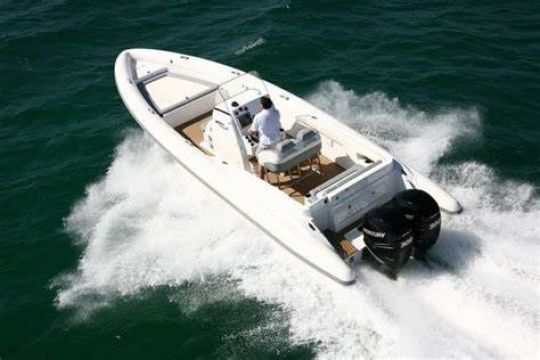
Satisfying customers through innovation
The latest novelty is a so-called "matt" finish on the colours of the ORCA range. This completes the range of fabrics already in the catalogue:
- Smooth
- Fabric impression
- Beading
- Honeycomb
- Carbon
With its 30 colours and 6 finishes, ORCA offers a unique possibility of personalisation, at a time when the need for differentiation is more than ever felt.
